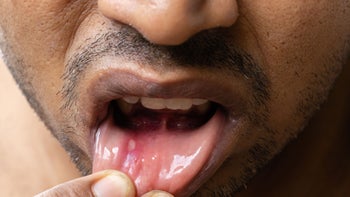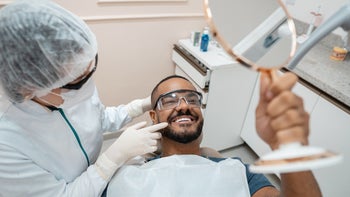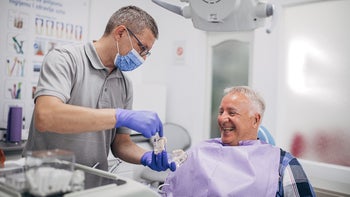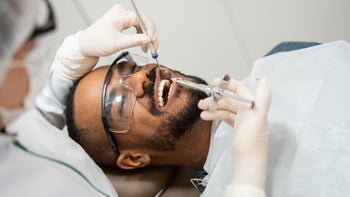
4 Things to Know Before Getting Adult Braces
Key takeaways:
As orthodontic treatment continues to evolve, adult braces are more common. Options such as ceramic braces and clear aligners are popular for adults.
Several factors may influence the cost of adult braces. These include how much tooth movement is needed and the type of braces you choose.
Correcting your bite and aligning your teeth as an adult will improve the odds of keeping your teeth long term.

Many are turning to adult braces to give them the smile they have always wanted. Whether you have a small space between your teeth or severe crowding, getting braces as an adult may help.
As you begin your journey, you’ll find that there are more options than you may have imagined. This is especially true with the rise of clear aligners such as Invisalign.
Here’s everything you should know about adult braces and how to choose the right option.
Search and compare options
Is it worth getting braces as an adult?
Think you may be too “old” to get braces or start orthodontic treatment? Think again: One in four orthodontic patients is an adult. And adult braces can provide many benefits.
Many adults are not happy with the way their teeth line up. When the teeth don’t line up or fit together properly, this is called malocclusion. The most common types of malocclusion that can be corrected with adult braces are:
Crowding (not enough space between the teeth or overlapping)
Spaces or gaps between the teeth
Malalignment (crooked teeth)
Excessive overbite or deep bite (the upper teeth cover the bottom teeth too much)
Underbite (the bottom jaw sits out farther than the top jaw)
Crossbite (the upper teeth sit behind the bottom teeth in the front or back)
Open bite (when the teeth in the front don’t touch when your mouth is closed)
Protrusion (teeth that stick out)
Not only will correcting these problems enhance your smile, it will also improve your oral health. When the teeth and jaws fit together properly, it leaves very few areas where food and plaque can become trapped in between the teeth. It will then become easier to keep the teeth clean with brushing and flossing. This decreases the risk for gum disease and tooth decay.
Correcting the alignment of your teeth will also reduce the likelihood of abnormal wear on the edges of the teeth.
4 things to know before getting braces as an adult
Before you make the decision to get adult braces, here are some things you should consider.
1. You have options
There are two main appliances that are used to align the teeth and correct how your teeth fit together. These are:
Traditional braces: These consist of brackets and wires that are fixed in place.
Clear aligners: These are clear, thin, plastic-like trays that you can take in and out (like Invisalign).
In addition to that, you have color and placement options:
Metal: Brackets can be silver or gold.
Ceramic: Brackets can be tooth colored.
Lingual braces: These are placed on the backs of teeth instead of the front.
Many factors may play a role in deciding which appliance is right for you. Talk to your dental provider to find the best option.
2. The cost may vary
The type of braces you choose can affect the price. The cost for traditional braces can range from $3,000 to $7,000. If you want the braces hidden and choose lingual braces, the cost can be close to $10,000.
Clear aligners can be cheaper. But it depends on how much correction you need. Invisalign can range from $1,800 to $9,500.
3. Insurance may cover adult braces
Both employer-provided and individual dental insurance may cover a portion of your adult braces cost. But be sure to check with your insurer in advance. The insurance company can provide you with more information and let you know if there are any limitations to coverage.
You may not have coverage for adult orthodontics through state insurance or Medicaid. Some may provide coverage if braces are medically necessary and not considered a cosmetic procedure.
4. Length of treatment varies
Orthodontic treatment for most people can range anywhere between 14 to 33 months. But adults with braces generally have a longer treatment time. This is because adults are no longer growing, and the bone is very dense. So it takes longer for the teeth to move. Treatment times will also vary based on the extent of your correction.
What are some alternatives to braces for adults?
Clear aligners, like Invisalign or Clear Correct, may be a more aesthetic alternative to traditional braces. These thin, clear, plastic-like trays are just as effective, but barely visible. If you are dissatisfied with the look of traditional braces, then clear aligners could be a great alternative. They are removable and typically worn at all times except when eating.
Another alternative to adult braces are dental veneers. These are permanent resin or ceramic shells cemented on the front of the teeth. They are typically used for minor imperfections like internal staining or a chipped tooth. They can also make teeth appear straight and fill in any spaces between them.
Veneers don’t correct your bite, however. They only provide a quicker way to have a more aesthetic appearance than braces.
What are the disadvantages of braces?
While adult braces have many benefits, there can be some disadvantages. Some drawbacks to wearing braces include:
Pain or discomfort
Difficult to clean
The expense
Having to avoid certain foods (to protect the teeth and braces)
Do teeth get weak after braces?
It depends. Cleaning and flossing is difficult if you wear braces. Food and plaque can become trapped in and around the brackets and wires. If they are not removed, bacteria that develops may start to break down the enamel. This may result in demineralization of the enamel. And you may notice white spots on your teeth.
This demineralized enamel is considered weakened enamel. It’s not as strong or resistant to cavities like healthy enamel. You can prevent this when wearing braces with more time, care, and attention in your daily routine. It’s also a good idea to use a daily fluoride mouth rinse to help keep the teeth mineralized and healthy during orthodontic treatment.
The bottom line
Don’t allow age to dictate whether you deserve the smile you’ve always desired. You can have a healthy, beautiful smile with adult braces. And correcting your smile will also improve the likelihood that you keep your teeth long term.
With so many options to choose from, there is sure to be one that meets your needs. Whether you decide to go with metal or ceramic brackets or Invisalign, your dental care provider can help you make the best choice.
Why trust our experts?


References
American Association of Orthodontists. (n.d.). Adult’s guide to orthodontics.
American Association of Orthodontists. (2019). Braces vs. clear aligners.
American Dental Association Division of Communications. (2003). Improving your smile with dental veneers. The Journal of the American Dental Association.
Center for Health Care Strategies, Inc. (n.d.). Medicaid adult dental benefits coverage by state.
Moresca, R. (2018). Orthodontic treatment time: Can it be shortened? Dental Press Journal of Orthodontics.
Nalbantgil, D., et al. (2013). Prevention of demineralization around orthodontic brackets using two different fluoride varnishes. European Journal of Dentistry.
University of Iowa. (2022). Malocclusion of teeth. A.D.A.M. Multimedia Encyclopedia.

























